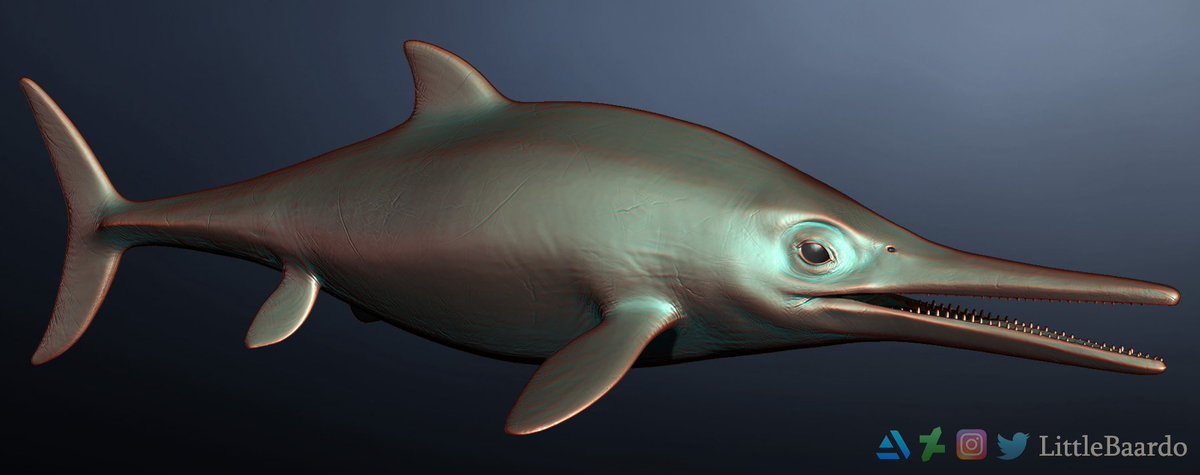Welcome to Aegirosaurus

Name Definition
Aegir's lizard
Name Given By
Bardet & Fernandez - 2000
Location
Germany and France
Classification
Reptilia, Ichthyosauria, Ophthalmosauridae, Platypterygiinae
Size
adults were around 2 meters long
Temporal Range
Tithonian - Valanginian stages of the Jurassic and Cretaceous periods, around 150 - 130 million years ago
Ecological niche
smaller piscivore/carnivore
Species/Sub Species
A. leptospondylus
Diet
like other ophthalmosaurs, Aegirosaurus probably frequented a diet of fish and aquatic invertebrates
Introduction
Aegirosaurus is a genus of ichthyosaurian reptiles that lived from the end of the Jurassic to the beginning of the Cretaceous in Europe. Aegirosaurus means “Aegir’s lizard”. Aegir, or Ægir, was a sea god in Norse mythology and was famous for his exceptional brewing skill. The species name leptospondylus means “slender vertebrae”. The original remains of Aegirosaurus were first described as a new species of Ichthyosaurus by Wagner in 1853 as Ichthyosaurus leptospondylus, however, around 150 years later in 2000, Bardet and Fernandez concluded that these remains should have been attributed to a new genus of ichthyosaur and they named it Aegirosaurus. Aegirosaurus’ previous taxonomic history is a good example of a thing taxonomists (scientists that specialize in the taxonomy or the classification of animals) call a wastebasket taxon effect. A wastebasket taxon effect was a frequented practice of taxonomy that was around for a majority of the 19th century that classified similar prehistoric animals grouped as different species of a single genus based only on superficial similarities, meaning these fossils weren't even closely examined. This practice once went to such an extent that Dilophosaurus, the famous two-crested theropod, was described as a species of Megalosaurus. Other theropods like Metriacanthosaurus were also classified into the genus Megalosaurus. New studies show that Aegirosaurus was also in an entirely different family in the Ichthyosauria order, the Ophthalmosauridae, and was in the subfamily of the Ophthalmosauridae, the Platypterygiinae. Before these fossils were declared of being from a new genus, they were also described as a subspecies of Ichthyosaurus called Ichthyosaurus trigonus posthumus which is now known as Macropterygius.